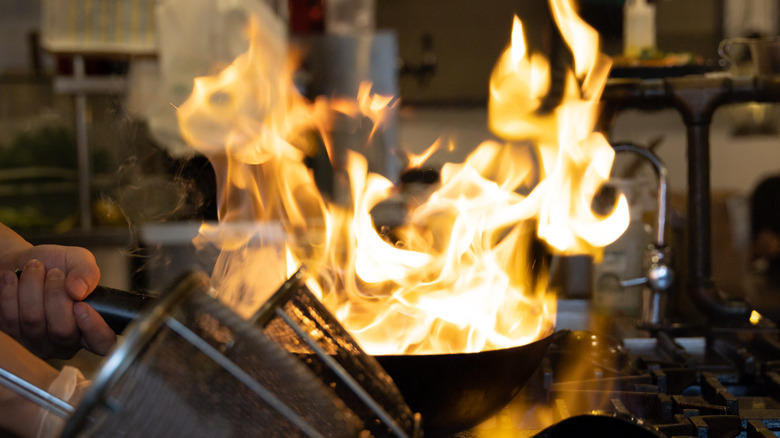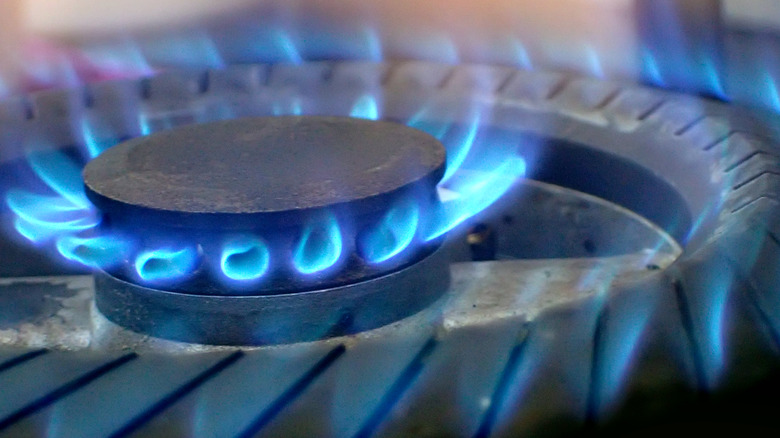The Truth About The Gas Stove Ban
Big flames licking the bottom of a pan while a cook gingerly sautés a dish are familiar images conjured at the mention of a gas stovetop. Professional chefs and home cooks alike have come to rely on gas ranges to properly prepare favored foods from Korean BBQ to flambéed baked Alaska. So, when the Los Angeles Times published an article about California's growing ban on gas stoves, fans of open-flame cooking became understandably distressed.
The Daily Meal notes that professional chefs prefer cooking over an open gas range because the ideal temperature can be reached faster and is easier to control. They're also cheaper to maintain and can be used with a wider variety of non-specialty cookware. Many cooks attribute the flavor profile and texture of signature dishes directly to the open flame of a gas range and say that cooking on an electric stove is an incomparable method.
Berkeley was one of the first cities to begin enacting the gas stove ban in 2019 and is still in litigation with The California Restaurant Association, which attempted to block the ban with a lawsuit. Restaurateurs in California worry that the ban will affect established menus that rely on gas cooking methods and fear the cost of replacing expensive appliances.
Why ban gas stoves and who's affected?
Tensions are on high heat in California after the implementation of a gas stove ban in new construction began in 2019, according to The Takeout. Since then, over 50 cities and counties across the Golden State have joined the ban, with other cities and states nationwide considering similar measures. Green initiatives fuel the reasoning behind the ban, but the flame of hope still burns for restaurateurs and home cooks attached to their gas ranges.
Buildings in the state of California create 43% of greenhouse gas emissions and 25% of emissions overall. The ordinance banning gas stoves from all new residential and commercial construction was enacted in an effort to reduce harmful greenhouse gases to zero by 2023.
As the gas stove ban only applies to new construction, restaurants and residences currently using gas ranges will not be affected as of yet. Buildings currently using gas will not be required to find an alternate heat source unless they move to a new build. Still, many restaurateurs remain concerned as local policymakers hone in on the fact that buildings emit more greenhouse gasses than cars in California. It has been noted that easy environmental fixes are minimal, and tackling future issues will require greater sacrifice going forward.

